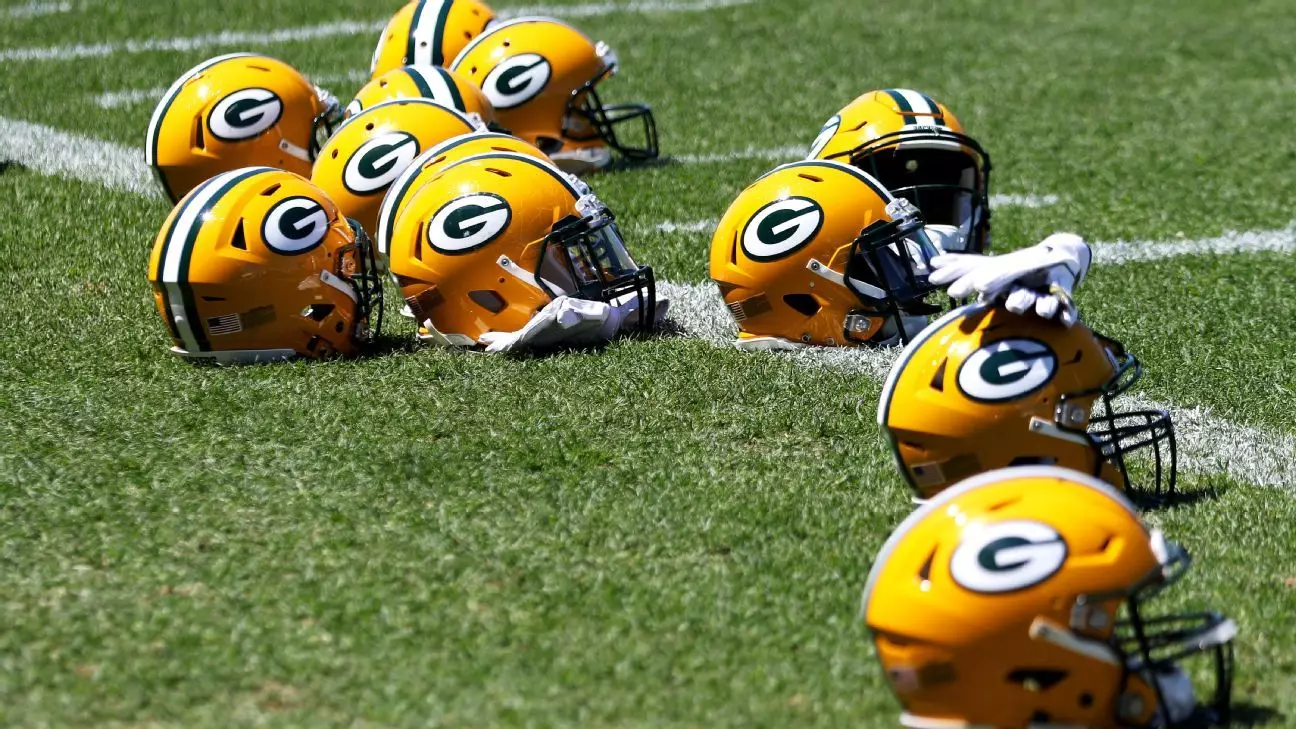The narrative of the NFL’s financial ascension is nothing short of extraordinary. When Mark Murphy assumed leadership of the Green Bay Packers nearly two decades ago, the league’s revenue sharing hovered around a modest $138 million per team. Fast forward to today, and the landscape has transformed into a multi-billion dollar industry. The recent revelation that NFL teams distribute over $432 million each, totaling a staggering $13 billion in revenue sharing, underscores the league’s explosive growth. This almost tenfold increase not only signifies economic prosperity but also highlights the NFL’s strategic mastery in monetizing its brand across multiple platforms.
The NFL’s financial journey is a testament to its ability to adapt and expand. The early 2000s saw a league heavily reliant on traditional broadcast rights, but recent years have demonstrated a dynamic pivot towards digital streaming and diversified revenue streams. The league’s capacity to harness various avenues of income reveals a keen understanding of changing consumer behaviors and media consumption habits. As the NFL continues to innovate, it maintains an insatiable appetite for revenue growth, becoming an emblem of American sports capitalism.
The Blueprint of Financial Dominance: Strategic Revenue Sharing
Revenue sharing stands out as a pillar of the NFL’s fiscal architecture. By distributing league-wide income equitably, the league ensures competitive balance and financial stability among all franchises, large or small. The Green Bay Packers, as the sole publicly owned team, serve as a living case study. Their transparency—mandatory due to their unique ownership structure—offers invaluable insights into the league’s overall financial health.
The NFL’s approach to growing revenues—particularly through lucrative television contracts—is a masterclass in media rights exploitation. Murphy’s recognition of the 7% annual growth rate reflects a targeted strategy that leverages the league’s unparalleled popularity. With the NFL’s shifting focus towards streaming platforms, the league is positioning itself to capitalize on emerging media consumption trends, ensuring sustained revenue streams well into the future.
The increase in local revenue, fueled by additional home games and improved facilities, underscores the importance of ground-level revenue generation. The Packers’ investments in Lambeau Field, now boasting state-of-the-art renovations, demonstrate a commitment to maintaining the franchise’s cultural significance while boosting its financial vitality. These expansions are not merely aesthetic; they serve as strategic catalysts propelling the franchise’s profitability and, by extension, the entire league’s growth.
Resilience Without a Magnate: The Independent Spirit of the Packers
The Green Bay Packers’ ownership model is as distinctive as their storied history. With over half a million shareholders collectively owning thousands of shares, the team has avoided private equity plays that many other franchises have adopted. This independent framework fosters a sense of community ownership and ensures that profits are reinvested directly into the team and its infrastructure rather than fattening individual pockets.
Yet, this model presents challenges—most notably, the inability to access significant private capital. Despite this, the Packers have thrived, emphasizing disciplined financial management and strategic investments. Their substantial corporate reserve fund, now totaling nearly $580 million, reflects prudent planning and resilience. The notable investment of $675 million into Lambeau Field and facilities indicates an understanding that long-term infrastructure developments are vital for continuous growth and fan engagement.
Murphy’s leadership was instrumental in navigating these financial waters. His focus on building the reserve fund symbolizes a safeguard against economic downturns and an investment into the franchise’s enduring legacy. The recent upgrades to the locker room and facilities serve as a testament to their strategic emphasis on quality and tradition, ensuring that the Packers remain a competitive and culturally significant franchise.
The Broader Implications: What the NFL’s Financial Power Means for the Future
Overall, the NFL’s unprecedented revenue growth is neither accidental nor purely a matter of luck. It is a carefully orchestrated symphony of strategic media rights negotiations, infrastructure investments, and innovative revenue diversification. The league’s commitment to expanding its global footprint and embracing technological advancements guarantees that this upward trajectory will persist.
The Green Bay Packers exemplify that even without a billionaire owner, a franchise can thrive through community engagement, prudent financial management, and strategic investments. Their success underscores an essential truth: the NFL’s power resides not solely in star players or media deals but also in its ability to sustain a financially robust ecosystem rooted in shared success. As the league continues to evolve, it sets an inspiring example of how strategic vision and community-focused ownership can propel entire industries toward unprecedented prosperity.

